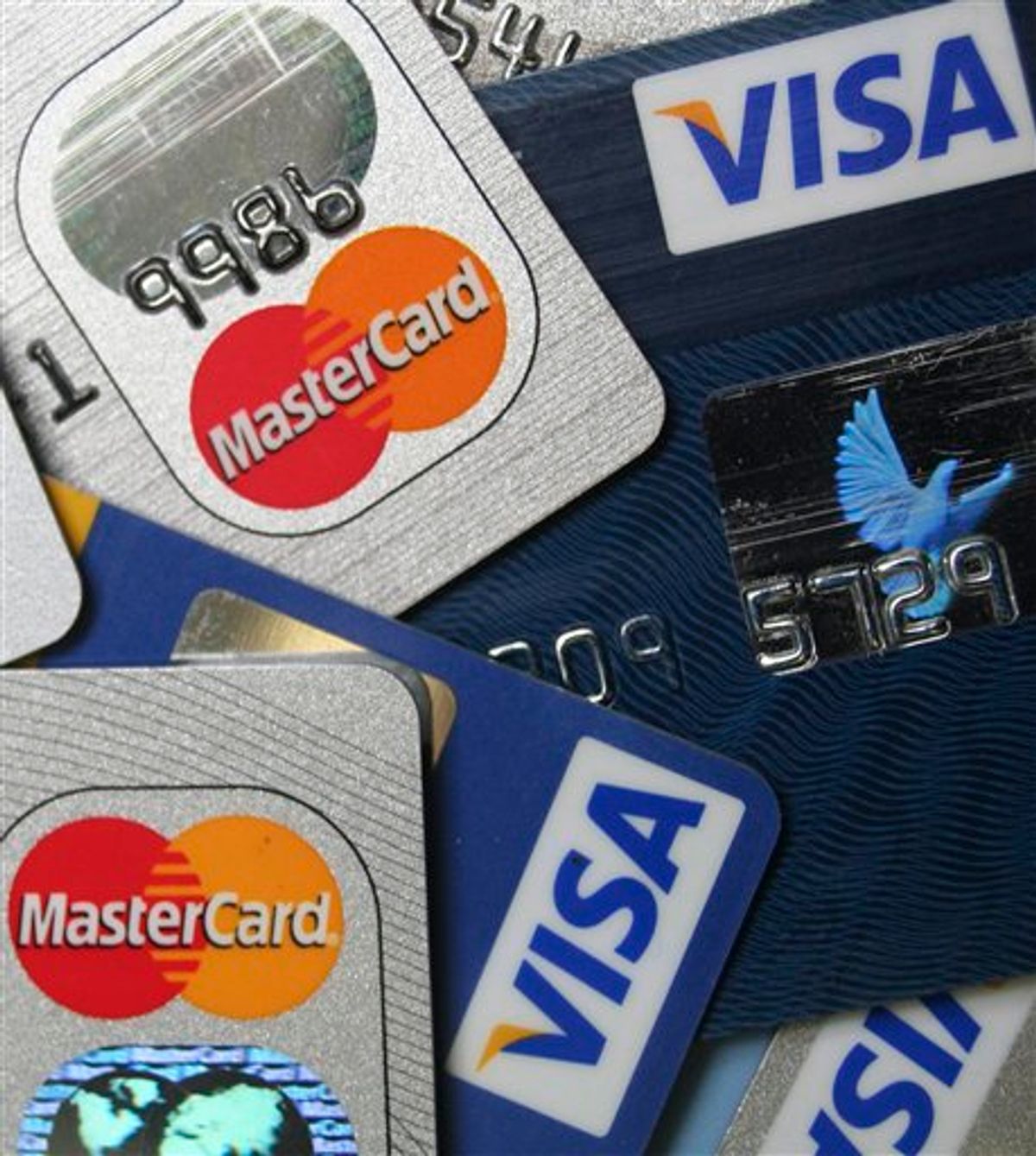Americans increased the amount of money they borrowed in November, mostly to buy cars and attend college. But the second straight month of gains barely raised consumer credit above its lowest point in four years.
Consumer debt rose $1.3 billion in November, the Federal Reserve said Friday. That follows a revised $7 billion increase in October.
The increase pushed overall borrowing to an annual rate of $2.4 trillion. That's not much higher than the $2.39 trillion rate from September -- the lowest point since January 2007. It's 6.9 percent below the $2.58 trillion high point hit in July 2008.
The figures are not adjusted for inflation.
Households have been borrowing less and saving more since the recession began in December 2007. This has been a major factor holding back overall economic growth because it has dampened consumer spending. Consumers account for 70 percent of total economic activity.
The strength in November came in the category that includes auto loans and student loans. The category that includes credit card debt fell for a record 27th month, although the November drop was smaller than the previous four months.
Borrowing in area of student loans and credit cards rose 4.2 percent in November after a 9.4 percent advance in October.
Consumers borrowed 6.3 percent less on their credit cards in November following a decline of 8.1 percent in October.



Shares